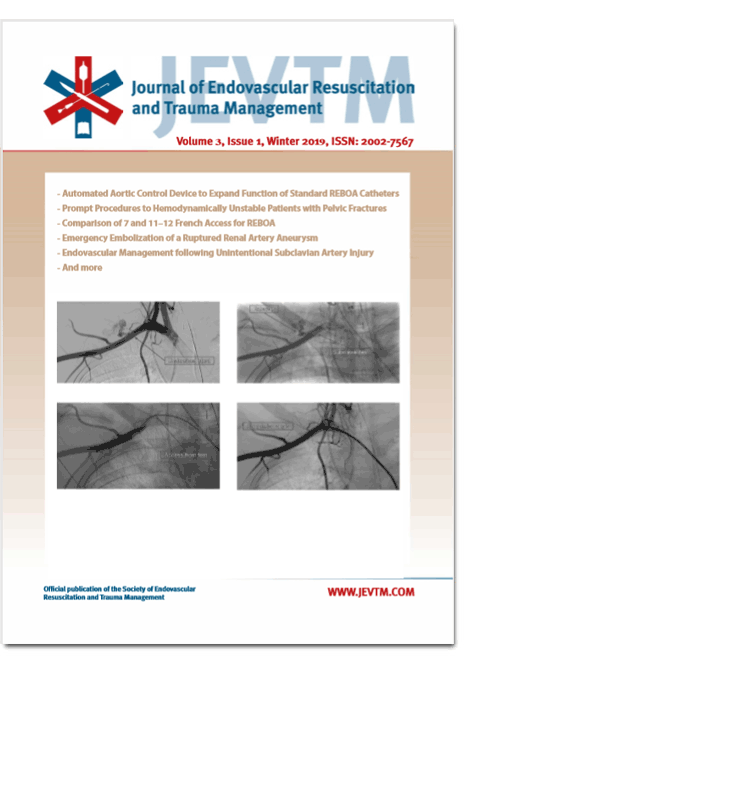A Novel Automated Endovascular Variable Aortic Control Device to Expand Function of Standard REBOA Catheters
DOI:
https://doi.org/10.26676/jevtm.v3i1.65Keywords:
EVAC, P-REBOA, REBOA, Automation, HemorrhageAbstract
Background: Endovascular methods for hemorrhage control, including resuscitative endovascular balloon occlusion of the aorta (REBOA), are evolving and are increasingly being applied clinically. Partial flow strategies to mitigate the consequences of complete aortic occlusion have been demonstrated in pre-clinical models to enhance REBOA and expand its application to various shock states. Initial studies demonstrated that controlled partial flow requires precision beyond the capabilities of manual balloon volume adjustment, therefore automation is required. Our group previously developed a proof-of-concept computer-controlled extracorporeal flow circuit capable of precision aortic flow regulation, but it was not clinically applicable. To bring this concept closer to clinical applicability, we have developed the first endovascular strategy to achieve precision aortic flow regulation, termed endovascular variable aortic control (EVAC).
Methods: Following instrumentation, five Yorkshire-cross swine were subjected to controlled 25% hemorrhage, followed by precision low volume aortic flow regulation using a commercially available compliant balloon catheter pre-positioned in the descending thoracic aorta, connected to a custom, wireless syringe pump. Closed-loop feed-back algorithms based on streaming physiologic data were used to determine balloon volume changes.
Results: The EVAC syringe pump was highly effective at maintaining precise aortic flow throughout the 45-minute intervention period during steady-state conditions as well as during rapid fluid administration. Aortic flow and distal mean arterial pressure remained stable during EVAC, despite changing proximal hemodynamics. Balloon volume was dynamic, averaging over 500 changes during intervention, with a mean volume change of 6.7 μL and a maximal change of 100 μL.
Conclusions: The EVAC syringe pump is capable of achieving aortic flow regulation with high precision, beyond what is achievable with manual control. This serves as a model for future device design, enabling as of yet unachievable clinical therapies for hemorrhage and shock states. Future technological development is required to fully translate this into clinical use.
Published
How to Cite
Issue
Section
License
Copyright (c) 2019 Journal of Endovascular Resuscitation and Trauma Management

This work is licensed under a Creative Commons Attribution 4.0 International License.
Authors of content published in the JEVTM retain the copyright to their works.
Articles in the JEVTM are published under the terms of a Creative Commons CC BY 4.0 license, which permits use, downloading, distribution, linking to and reproduction in any medium, provided the original work is properly cited.




